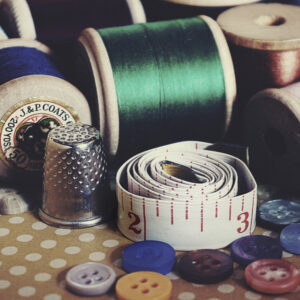10 Depression-Era Money-Saving Tips That Still Work Today
The Great Depression was a time of hardship and uncertainty, but it was also a period of incredible resourcefulness and innovation. People had to make the most of what they had, and they came up with some ingenious ways to save money.
While the economic landscape is different today, many of the money-saving tips from the Depression era are still surprisingly relevant. Here are 10 Depression-era tips that can help you stretch your budget in the 21st century:
Grow Your Own Food
If you have space, even a small balcony or windowsill can be used to grow herbs, vegetables, and even fruits. Growing your own food can save you money on groceries and provide you with fresh, healthy produce.
Cook at Home
Eating out is a major budget drain. During the Depression, people had little choice but to cook at home, and they became experts at making delicious and nutritious meals from scratch. This is still a great way to save money today. Planning your meals, utilizing leftovers, and learning to cook basic dishes can make a big difference in your grocery bill.
Buy in Bulk (but only if you’ll use it all)
Buying in bulk can save you money on some items, but it’s important to only buy things you’ll use before they expire. During the Depression, people learned to carefully plan their purchases and avoid impulse buys.
Get Creative with Entertainment
During the Depression, people had to find ways to entertain themselves without spending a lot of money. They played games, told stories, and enjoyed free activities like picnics and walks in the park. Getting creative with your entertainment can still help you save money today.
Barter and Trade
During the Depression, people often bartered goods and services with each other. This is a great way to get things you need without spending any money. You can barter skills, services, or even homemade goods.
Borrow Instead of Buy
If you need something for a short time, borrow it from a friend or neighbor instead of buying it. This can save you a lot of money on things you don’t use very often.
Use Reusable Items
Disposable products add up over time. During the Depression, people used cloth towels instead of paper towels, mended clothes instead of buying new ones, and brought their own bags to the store. Using reusable items is still a great way to save money today.
 Mend and repair instead of replacing
Mend and repair instead of replacing
During the Depression, people couldn’t afford to throw things away. They learned to mend clothes, fix furniture, and make do with what they had. This mentality of repair over replace is still a great way to save money today. Before you toss something out, see if it can be repaired or repurposed.
Support Local Businesses
During the Depression, people supported local businesses because it helped their communities. Shopping at local stores and farmers markets can still be a great way to save money and support your community.
Be Mindful of Your Spending
The most important Depression-era money-saving tip is to be mindful of your spending. Track your expenses, set a budget, and avoid impulse purchases. By being aware of where your money is going, you can make small changes that will add up to big savings over time.
Remember, living frugally doesn’t have to mean sacrificing your quality of life. By adopting some of these Depression-era money-saving tips, you can save money and live a more sustainable lifestyle.
I hope these tips help you stretch your budget and reach your financial goals!
